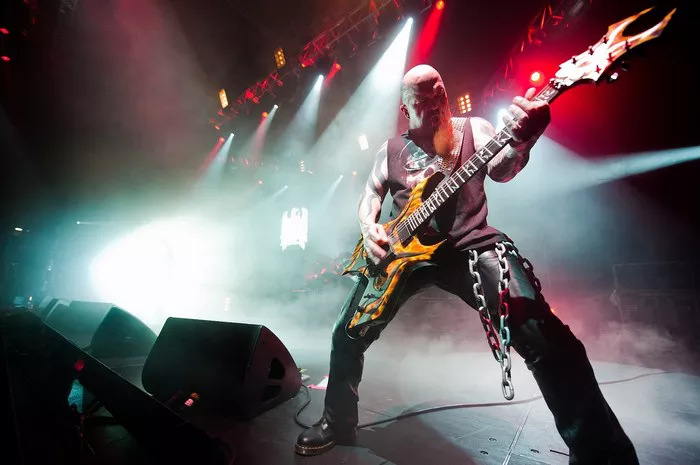Nordic countries have long been celebrated for their rich cultural heritage, breathtaking landscapes, and progressive social policies. However, beyond the fjords and the Northern Lights lies a vibrant and thriving music scene that has captured the imaginations of metal enthusiasts worldwide. Nordic metal bands have emerged as some of the most influential and innovative forces in the genre, shaping its evolution and pushing boundaries with their unique sound and lyrical themes. In this article, we will embark on a journey to explore the phenomenon of Nordic metal bands, delving into their origins, musical characteristics, cultural influences, and global impact.
Origins and Evolution
The roots of Nordic metal can be traced back to the late 1980s and early 1990s when bands like Bathory, Mayhem, and Darkthrone pioneered the black metal genre in Norway. Fueled by a spirit of rebellion and a fascination with darkness and mysticism, these bands laid the groundwork for what would become known as the “Second Wave” of black metal. Characterized by raw production, shrieking vocals, and aggressive riffing, this subgenre quickly gained notoriety for its provocative lyrics and controversial actions, including church burnings and murders.
Meanwhile, in neighboring Sweden, bands like Entombed, Dismember, and At the Gates were forging their own path with a more melodic and riff-oriented style of death metal. Often referred to as “Swedish death metal,” this subgenre combined the brutality of American death metal with the catchy melodies and harmonies of traditional heavy metal, earning widespread acclaim and influencing countless bands around the world.
As the 1990s progressed, Nordic metal continued to diversify and expand, with bands incorporating elements of folk, progressive, and symphonic music into their sound. Groups like Amorphis, Ensiferum, and Finntroll emerged from Finland, blending traditional folk melodies and instruments with crushing riffs and epic storytelling. In Norway, bands like Emperor and Dimmu Borgir pushed the boundaries of black metal with symphonic elements, orchestral arrangements, and elaborate stage productions, earning a reputation for their grandiose and theatrical performances.
Musical Characteristics
One of the defining characteristics of Nordic metal is its embrace of melody and atmosphere alongside aggression and intensity. While black metal bands often employ dissonant chords, tremolo picking, and blast beats to create a sense of chaos and darkness, they also incorporate melodic hooks, atmospheric keyboards, and folk influences to add depth and complexity to their sound. Similarly, Swedish death metal bands combine brutal riffing and guttural vocals with catchy melodies and harmonies, creating a sense of groove and momentum that sets them apart from their American counterparts.
Another hallmark of Nordic metal is its lyrical themes, which often draw inspiration from Norse mythology, Scandinavian folklore, and the natural world. Black metal bands frequently explore themes of paganism, anti-Christianity, and existential despair, using metaphor and symbolism to convey a sense of mysticism and mystery. Swedish death metal bands, on the other hand, often focus on more visceral and existential themes, exploring topics like death, violence, and the human condition with brutal honesty and intensity.
Cultural Influences
The music of Nordic metal bands is deeply intertwined with the culture and history of the region, reflecting its rugged landscapes, ancient traditions, and Viking heritage. Bands like Amon Amarth and Tyr celebrate Norse mythology and epic sagas, paying homage to legendary figures like Odin, Thor, and Ragnarok through their music and imagery. Similarly, folk metal bands like Korpiklaani and Turisas draw inspiration from Finnish and Estonian folklore, incorporating traditional instruments like the kantele and accordion into their songs and adopting a theatrical and celebratory approach to their live performances.
In addition to drawing inspiration from their cultural heritage, Nordic metal bands also reflect the social and political climate of the region. Many bands embrace progressive values and advocate for causes like environmentalism, social justice, and LGBTQ+ rights, using their music as a platform to raise awareness and promote positive change. Others explore more personal and introspective themes, grappling with issues like depression, addiction, and existential angst in their lyrics and music.
Global Impact
Despite hailing from a relatively small and isolated region, Nordic metal bands have had a significant impact on the global metal scene, inspiring countless fans and influencing generations of musicians around the world. Bands like Opeth, Katatonia, and Children of Bodom have achieved international success and critical acclaim, earning praise for their technical proficiency, songwriting prowess, and innovative approach to metal music.
Furthermore, the influence of Nordic metal can be felt across a wide range of subgenres, from blackgaze and atmospheric black metal to folk metal and melodic death metal. Bands from countries as diverse as Iceland, Finland, and Sweden continue to push boundaries and challenge conventions, forging new paths and expanding the sonic possibilities of metal music.
Conclusion
In conclusion, Nordic metal bands occupy a unique and influential position within the global metal scene, combining aggression and intensity with melody and atmosphere to create a sound that is both powerful and captivating. Drawing inspiration from their cultural heritage and the natural world, these bands have pushed boundaries, challenged conventions, and inspired countless fans and musicians around the world. As the genre continues to evolve and expand, one thing is certain: the legacy of Nordic metal will endure, shaping the future of metal music for generations to come.

